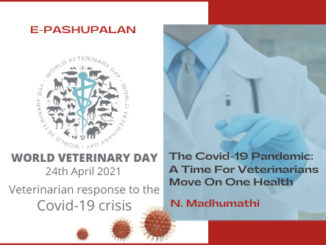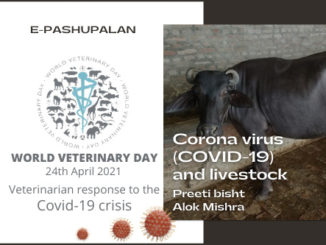Veterinarians are more closely associated with diabetes at least when the sole source of insulin was animals, some 20-25 years ago. The name “diabetes” has now become a trendy term not only among progressive public and palliative patients, but also among practicing physicians. There are also lots of confrontations of various terminologies used for this disease. The old conventional terms “Insulin Dependent Diabetes” (IDD) and “Non-insulin Dependent Diabetes” (NIDD) are not followed now because they have frequently resulted in classifying the patients based on treatment rather than etiology. Then came the terms Type I (IDD) and Type II (NIDD) which were also not officially followed because the Roman numerical I and II can wrongly be confused as the Acute Type I leading on to the Chronic Type II. The approved terminology as on date is Diabetes Type 1 for IDD and Diabetes Type 2 (NIDD) with Arabic numerical to show the discontinuity between 1 & 2. To make the confusing matters worst, some doctors smartly use “Insulin Resistance” to Type 2 diabetes which is again wrongly construed as the one similar to “Antibiotic Resistance” meaning wrongly that continuous treatment of diabetes with insulin may lead on to Type 2.

Strictly and correctly speaking “Hyperglycemia” is a misnormer. Scientifically, diabetes Type 1 is “Intracellular Hypoglycemia” due to endogenous insulin deficiency, which is indirectly diagnosed by hyperglycemia in the extracellular fluid either as plasma glucose or serum glucose.
Management or control of any disease in general and diseases of human in particular, is initiated after diagnosis of the disease. If the diagnosis of the disease is positive and correct, treatment will be initiated easily and directly. Even if the diagnosis is not possible or diagnosis is false – either false positive or false negative, palliative treatment on the basis of symptoms is possible. In any case, the worst situation could be a failure of the control of the disease. But in the case of diabetes, a wrong diagnosis of Type 1 diabetes if started with insulin treatment, it will induce immunogenic anti-insulin response either through humoral anti-insulin antibody or through cell mediated anti-insulin response or both causing a serious destruction of insulin secreting cells. This danger did not happen in those days when insulin from animal source was used because such insulin was more homologous to human system. But present day insulin are cloned antigens and so are more heterologous that they are recognized as foreign antigen and stimulated as vaccine response.
Like Indian pharmacopeia, there is no Indian standards for blood glucose level for diabetic diagnosis. To quote Prof. B.M. Hegde’s (a cardiologist & former vice-chancellor) opinion (Indian Exp. Dtd. 06.09.2016). “Western Human Medicine is not true science. It is just statistical science where averages of all measurements are converted into normals. When one converts averages into normals, one generates 5-25% false positives. Today the diagnosis has become a disease in itself. We can create epidemics where none existed,” I feel the present day diabetic scenario of India is seemed to be a created epidemics.
If the following questions are scientifically or even logically addressed, at least a rethinking on this topic may originate among us.
- The so called pathology of diabetes is due to the mere presence of high glucose in the blood or low /nil glucose inside the millions of cells of the body …?
- The very nomenclature of classification of diabetes i.e Type 1 or Type 2 is so badly dependent on the basis of treatment and not by Etiology… why…?
- Why laboratory assessment of “Endogenous Insulin” is not followed in any protocol of initial diagnosis of diabetes…?
- The presence of glucose in blood is whether a “normal constituent” or a “pathological metabolite”.
- Why or how the 120 mg/Dl was decided to be the cut off level for diabetic diagnosis…?
- In OGTT – Oral Glucose Tolerance Test – till now approved and followed test protocol for diagnosis of diabetes – 75 g of glucose is seemed to be dangerously high because 75 g of glucose is approx. equivalent to 75 x 6 = 450 g of boiledrice or 75 x 3 = 225 g of boiled cereal – any of which is normally impossible to take as a single meal by anybody. How can this be a reasonable test …?
As human beings, we have our bodies, which are but the illusion of our mind, our worries and anxieties, our social and environmental factors, our economic and social status, and above all, our religious beliefs which could collectively and severally affect our personality as a patient. The best doctor to know all these would be our family doctor.
The last class knows more and more about less and less. This tendency to diagnose and treat patients with a tinted glass of reductionism has become the bane of western medicine today. In more advanced set ups, the patient is hardly listened to or examined physically. The symptoms direct the huge list of investigations and from then on, the specialist treats only the reports and NOT the poor sick human being resulting in much misery and economic loss to the patient. It is usually outsiders who spot these lacunae in any system and think outside the box.
Young veterinary researchers of physiology, biochemistry and biotechnology can address these questions because veterinary preventive medicine is not only for zoonosis but also for public health like this and think outside the box.






Be the first to comment